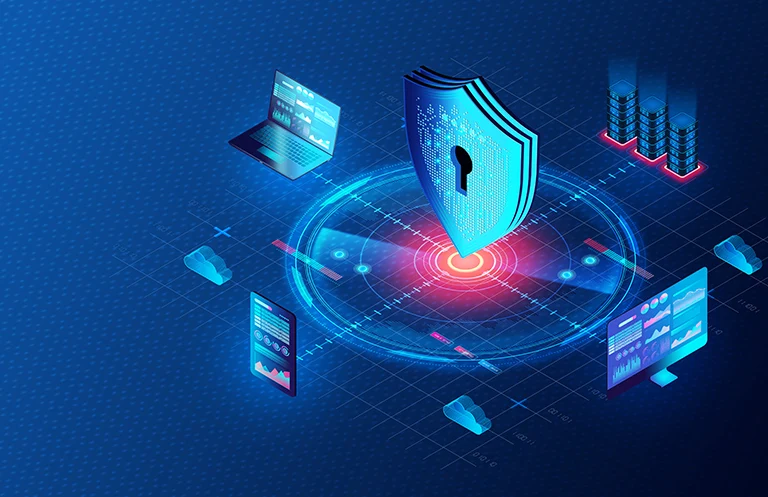The telecommunication industry is at the forefront of the digital transformation. The telecom industry has been making a huge shift in terms of technologies. The emergence of these digital transformation technologies allows millions of people around the world to experience new ways of accessing information, as well as carrying out interaction and communication, which is said to have long-term implications in the human lifestyle.
The IoT telecom services market size is estimated to reach USD 17.67 Billion by 2021, at a Compound Annual Growth Rate (CAGR) of 43.6%, according to MarketsandMarkets
Internet of Things comes with the concept that every device should be electronically integrated and interconnected. Hence, telecom operators are now using digital platforms that combine the connectivity, analysis, mobile, security, and cloud to support business and all these factors help generate greater revenue.
Why Telecomm Industry is moving towards Digital Transformation
The concept of digital transformation is driving the changes we see in the world around us. In fact, it has the potential to improve the lives of people while also bringing new opportunities for businesses to create and innovate.
Talking about the telecom sector, digitization offers telecom industry an opportunity to reconstruct their market position, re-create their business systems, and produce inventive offerings for customers. Today, more operators are focusing on improving the engagement with users. Telecom operators are adopting automation technology, multi-channel approach, and personalization services to create a great customer experience, which improves asset utilization.
Emerging Adoption of Technologies in the Telecom Industry
Below are some key initiatives that are being adopted by leading telecom industry operators to increase their market share and enhance customer experience.
NB-IoT (Narrowband IoT)
NB-IoT is a low-power wide area network (LPWAN) radio technology standard. Some specifications developed by 3GPP (3rd Generation Partnership Project, a collaboration between groups of telecommunications standards associations) are:
- NB-IoT LPWAN solution runs on a licensed spectrum, which assures the quality of service and a future collaboration capability.
- It is a technology that is related to LTE, which supports two-way communication, specifically designed for LPWA application.
- NB-IoT has been developed to allow efficient communication, extended battery life for a large number of distributed devices and lower cost for vast geographical footmark.
- It is used to connect massive numbers of devices with small and steady streams of data at a low cost and in a wide urban infrastructure.
Wireless Payment
Wireless Payment systems include credit cards, debit cards, key fobs, smart cards, and other devices, including smartphones and mobile devices that use technology like RFID (radio-frequency identification) or NFC (near field communication) for making secure payments.
Such technology works by using wireless chips that contain the user’s payment card details, embedded in a mobile phone or on a payment card. The embedded chip and antenna allow the consumers to flap their card or handheld device over a reader at the point of sale terminal without having to swipe the card or using a pin. The technology can also be used to deliver information messages to NFC-equipped phones when they are near the tagged card readers or a poster in-store.
5G Technology
5G mobile network can not only interconnect people, but also interconnect and control machines, objects, and devices, offering faster speed and reliable connection on smartphones and other devices. It delivers a new level of performance and efficiency that will empower new user experience and connect new industries.
5G is categorized into 3 main types:
- Enhanced Mobile Broadband: 5G not only enable smarter phones but also guide with new immersive experiences, such as VR and AR, with faster, more uniform data rates, lower latency, and cost-per-bit.
- Mission critical communication: 5G enables services that can transform industries with reliable, available, low latency links like remote control of fussy infrastructure, vehicles, and medical procedures.
- Massive Internet of Things: 5G can seamlessly connect a massive number of embedded sensors in virtually everything through the capability to scale down data rates, power, and mobility to provide an extremely lean/low-cost solution.
RELATED BLOG
A 5G user can also seamlessly use 5G, 4G, and Wi-Fi since 5G can connect with 4G and Wi-Fi, allowing a user to simultaneously be connected to 5G New Radio (NR), LTE or wireless technology. Since it will be designed for an unlicensed spectrum without requiring access to the licensed spectrum, more entities will be able to deploy 5G and enjoy the benefits of 5G technology.
Advantages of 5G (NR) technologies:
- Advanced spectrum sharing technology
- Advanced massive antenna MIMO technologies
- Flexible LDPC (Low-density parity check) channel coding
- Flexible, dynamic, and self- contained LTE TDD subframe design
- Scalable OFDM (orthogonal frequency-division multiplexing) numerology with 2n scaling of a subcarrier spacing
Location Tracker
With the emergence of the Internet of Things technology and location-based sensors like GPS, we have the ability to create a personal security solution with location tracking capabilities. GPS can provide extremely accurate location information for mobile objects and people, which is superior to any of the previous tracking techniques.
With this tracking technology, telecom operators can get a better visibility of supply chains, track, and monitor the location of goods, locate the workers’ position and increase the business efficiency. It also includes the capability to broadcast the existing user location to the cloud platform for further processing. In such a scenario, depending on the data sent by the remote system, the cloud platform will evaluate the location and translate it into an understandable language.
Integrated Network Management
Currently, businesses rely upon a vast telecommunication network to maintain an effective and efficient contact between employees, workers, and clients on a daily basis. Integrated network management allows companies to better track and control expenses related to the existing telecom network. The main objective of integrated network management to achieve an error-free network and improve performance.
BSS-OSS (IT- network) integration fits into this approach. It provides telecom operators with an opportunity for growth and increased profitability. Integrating IT and network services allows telecom companies to address their customer’s evolving demands, which is a competitive necessity. It also leads to cost reduction, allowing them to invest in unique capabilities.
The telecom industry continues to be a beacon of digital transformation, integrating innovative technologies to enhance connectivity and communication. As we step into 2024, this sector continues to evolve rapidly, integrating cutting-edge technologies to revolutionize communication and connectivity. This article explores the forefront technologies propelling this transformation, reflecting the latest advancements and industry trends.
Key Technologies Driving Transformation
- Advanced 5G Deployment: Beyond its initial rollout, 5G technology in 2024 will become more refined and widespread. Enhanced Mobile Broadband (eMBB), Ultra-Reliable Low Latency Communications (URLLC), and Massive Machine Type Communications (mMTC) are now integral parts of the telecom infrastructure. These advancements offer unprecedented speed, connectivity, and reliability, enabling new applications in IoT, autonomous vehicles, and smart cities.
- AI and Machine Learning: Artificial Intelligence (AI) and Machine Learning (ML) continue to be pivotal in telecom, improving network optimization, predictive maintenance, and customer service. AI-driven predictive analytics are now standard in network management, enabling telecom operators to anticipate and mitigate network issues proactively.
- Internet of Things (IoT) Integration: IoT’s role in telecom has expanded significantly, with more devices connected than ever. The number of IoT devices worldwide was around 15.1 billion in 2020 and this figure is forecasted to almost double to more than 29 billion by 2030, according to Statista. This integration has led to the development of smarter cities and homes, enhanced industrial automation, and the evolution of connected healthcare.
- Edge Computing: As data generation skyrockets, edge computing has become crucial in telecom for processing data closer to the source. This reduces latency and bandwidth use, enabling real-time data analysis and faster decision-making, particularly vital for IoT and 5G applications. The worldwide generation of data, particularly from IoT devices, is expected to be around 175 to 180 zettabytes per year across 2024 and 2025. This volume of data, especially from IoT devices, necessitates processing on the edge rather than central systems due to the sheer volume and need for real-time analysis and insights.
- Cybersecurity Enhancements: With the increasing reliance on digital networks, cybersecurity has become a paramount concern. Telecom companies now employ more sophisticated security protocols and technologies, including blockchain and advanced encryption, to protect data integrity and privacy.
- Cloud Computing and Virtualization: The shift towards cloud-based services and network function virtualization continues to gain momentum. These technologies offer telecom operators flexibility, scalability, and efficiency, reducing operational costs and enhancing service delivery.
- Sustainable and Green Technologies: Recognizing the environmental impact, the telecom industry in 2024 places a stronger emphasis on sustainability. Innovations in energy-efficient networking and the use of renewable energy sources are now more prevalent.
- User-centric Network Design: Networks are increasingly designed with the end-user in mind, focusing on personalized experiences. This involves the use of advanced analytics and AI to understand user preferences and tailor services accordingly.
eInfochips: A Key Partner in Telecom Transformation
As a competent ER&D partner, eInfochips has been at the forefront of these technological advancements. eInfochips offers comprehensive solutions that support telecom companies in navigating and implementing these emerging technologies. Their expertise in areas like AI, IoT, and cloud computing, combined with a commitment to ‘enriching lives through engineering excellence,’ makes them an ideal partner for digital transformation in telecom. For more information, visit eInfochips.com.
Some key Market Statistics
- The US Telecom Market is projected to grow from USD 427.43 billion in 2023 to USD 511.83 billion by 2028, at a CAGR of 3.67% (Mordor Intelligence, 2023).
- Major US telecom companies like AT&T, Verizon, and T-Mobile are already charting the course for 6G deployment and enhancing network capacity with expanded fiber and wireless deployments.
- The US is a global leader in 5G adoption, expected to reach 68% by the end of 2025. The country also boasts a high smartphone adoption rate, anticipated to increase to 85% by 2025.
Conclusion
In 2024, the telecom industry’s rapid technological advancements continue to redefine communication and digital connectivity, with each technology playing a crucial role in enhancing network capabilities and customer experiences. eInfochips’ IoT Solution and Services framework is instrumental in keeping pace with these trends, providing stakeholders in the telecom industry with the necessary tools to stay ahead in this evolving landscape.












